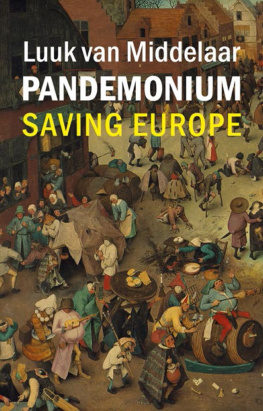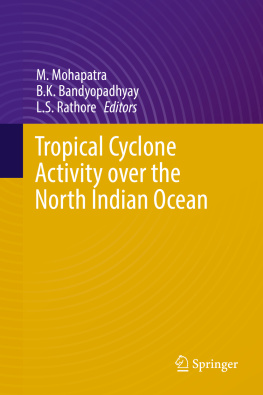Tamal Bandyopadhyay - Pandemonium: The Great Indian Banking Tragedy
Here you can read online Tamal Bandyopadhyay - Pandemonium: The Great Indian Banking Tragedy full text of the book (entire story) in english for free. Download pdf and epub, get meaning, cover and reviews about this ebook. year: 2020, genre: Politics. Description of the work, (preface) as well as reviews are available. Best literature library LitArk.com created for fans of good reading and offers a wide selection of genres:
Romance novel
Science fiction
Adventure
Detective
Science
History
Home and family
Prose
Art
Politics
Computer
Non-fiction
Religion
Business
Children
Humor
Choose a favorite category and find really read worthwhile books. Enjoy immersion in the world of imagination, feel the emotions of the characters or learn something new for yourself, make an fascinating discovery.
- Book:Pandemonium: The Great Indian Banking Tragedy
- Author:
- Genre:
- Year:2020
- Rating:4 / 5
- Favourites:Add to favourites
- Your mark:
- 80
- 1
- 2
- 3
- 4
- 5
Pandemonium: The Great Indian Banking Tragedy: summary, description and annotation
We offer to read an annotation, description, summary or preface (depends on what the author of the book "Pandemonium: The Great Indian Banking Tragedy" wrote himself). If you haven't found the necessary information about the book — write in the comments, we will try to find it.
Pandemonium: The Great Indian Banking Tragedy — read online for free the complete book (whole text) full work
Below is the text of the book, divided by pages. System saving the place of the last page read, allows you to conveniently read the book "Pandemonium: The Great Indian Banking Tragedy" online for free, without having to search again every time where you left off. Put a bookmark, and you can go to the page where you finished reading at any time.
Font size:
Interval:
Bookmark:

Pandemonium
The Reserve Bank of India would like to assure the general public that Indian banking system is safe and stable.
RBI statement, 1 October 2019
Why did Indias central bank have to issue an unprecedented statement to that effect?
In Pandemonium : The Great Indian Banking Tragedy , Tamal Bandyopadhyay takes you in search for the answer. It is a compelling story on the rot in Indias banking system how promoters easily swapped equity with debt as bank managements looked the other way to protect their balance sheets, until the RBI began waging a war against ballooning bad loans.
What really ails public sector banks, the backbone of Indias financial system? Is it the government ownership itself, or how this owner actually behaves? And just when many were rooting for privatisation as a way out, powerful bankers such as Chanda Kochhar and Rana Kapoor exposed the soft underbelly of seemingly more efficient and profitable private banks of India.
A timely and insider look at the dramatic forces reshaping banking in Asias third-largest economy, this book is a birds-eye view of Indian banking and also a fly-on-the-wall documentary. A must-read to understand contemporary Indias challenges and economic potential.
Praise for the Book
Tamal has a deep understanding and a broad perspective of the banking and financial sector. His curiosity, willingness to listen, attention to detail and ability to simplify complexity, while posing inconvenient questions, are unique strengths. These are reflected in this book.
UdayKotak, MD & CEO, Kotak Mahindra Bank Ltd & President, CII
No other financial journalist-cum-author can read the pulse of the Indian banking system as Tamal can. A one-stop narrative of nuances and insights a reader is unlikely to get elsewhere. Its a compelling read.
Deepak Parekh, Chairman, HDFC Ltd
Tamal writes with honesty, based on hard facts and with no holds barred. The volume will surely add to his reputation as an astute and insightful observer of, and honest commentator on, banking sector.
He has given us a financial sector policy thriller, difficult to put down once one starts the first chapter Who Killed Indian Banking? Successive chapters prove the point that investigative and analytical journalism can provide sharper insights than a whole host of heavy-duty essays.
Tamals real strength is his determination to dig deep, put lesser-known facts on decision making in the sector out in the public domain without being unduly normative or judgmental about the persons involved.
Rajiv Kumar, Vice Chairman, NITI Aayog
Our national economy has been under siege, aggravated by malfunctioning of the banking sector. This book offers valuable insights on its origin, spread and possible measures for a way out They [the four distinguished former governors] spoke freely with Tamal because of his formidable reputation as a thoughtful, meticulous and fiercely independent columnist. In fact, these qualities shine throughout this book. I recommend this important book to professionals as well as the general public. It will benefit us all.
Vijay Kelkar, Chairman, India Development Foundation
The breadth of knowledge and attention to details shown by this veteran economic historian and journalist make fascinating reading for anybody interested in the Indian financial sector. Tamals superb storytelling makes the book so gripping that the reader is transported to the scene where the action is taking place. Its an unbiased and candid account of the role played by the regulator, the investigating agencies, the business community, the bankers and the government. By the time one reaches the end of the book, it becomes clear why banking in India has been a tragedy.
My only complaint with the book is that its like binge-watching an engrossing TV series I could not put it down until the end.
U.K. Sinha, Former Chairman, SEBI
Tamal has an exceptional record as an observer of Indian banking The interviews with past governors of the Reserve Bank are revelatory because of their different perspectives. Recommended reading for anyone interested in the subject.
T.N. Ninan, Chairman, Business Standard Pvt Ltd
Tamal Bandyopadhyays magnum opus provides insights into the most important question in Indian policymaking today. With a fine understanding of banking, finance and economy and willingness to respect different perspectives, Tamal has woven a compelling tale of what has gone wrong with Indias banking system, starting from the 1990s. In telling this tale, he critically examines the role of governance, management, regulation and especially supervision of banks. In reforming these four pillars lies the solution to Indias most important policy problem and thereby the path to India becoming a $5 trillion economy.
Krishnamurthy Subramanian, Chief Economic Adviser, GoI

ROLI BOOKS
This digital edition published in 2021
First published in 2021 by
The Lotus Collection
An Imprint of Roli Books Pvt. Ltd
M-75, Greater Kailash- II Market
New Delhi 110 048
Phone: ++91 (011) 40682000
Email:
Website: www.rolibooks.com
Text Tamal Bandyopadhyay, 2021
Foreword Bibek Debroy, 2021
All rights reserved.
No part of this publication may be reproduced, transmitted, or stored in a retrieval system, in any form or by any means, whether electronic, mechanical, print reproduction, recording or otherwise, without the prior permission of Roli Books. Any unauthorized distribution of this e-book may be considered a direct infringement of copyright and those responsible may be liable in law accordingly.
Cover Design : Bhavi Mehta
eISBN: 978-81-946433-6-4
All rights reserved.
This e-book is sold subject to the condition that it shall not, by way of trade or otherwise, be lent, resold, hired out, or otherwise circulated, without the publishers prior consent, in any form or cover other than that in which it is published.
To Tapan Jyoti, my elder brother, an inspiration for many in the small town where I grew up, and my sister-in-law Chhabi, for her love and affection. You know what you mean to me.
Contents
Foreword
In the preface, Tamal Bandyopadhyay refers to Akira Kurosawas Rashomon , a metaphor for different, and often conflicting, versions of the same event.
For Indian banking, the metaphor is rather apt. Reams have been written on banking in India, not just research papers, but books too. C.D. Deshmukh, the first Indian to be appointed Reserve Bank of India (RBI) governor and later Union finance minister, did write his autobiography. Subsequent RBI governors also wrote books. Since Y.V. Reddy, it has become almost mandatory for ex-RBI governors (and a few ex-deputy governors) to author books focused on their RBI stints. At best, to use the same metaphor, it is the woodcutters story, not the commoners perspective. But I doubt Rashomon would have become such a great film without Kazuo Miyagawa as its cinematographer.
To chronicle what Tamal calls the great Indian banking tragedy, we need an external, objective and dispassionate observer as cinematographer. If you are inside the system, you may know everything about it, but you may have no sense about its place and function in the bigger picture. For years and years, Tamal has been, and still is, a widely read business journalist, across newspapers, especially on banking and finance. That brings an investigative flair and felicity in his use of language, aided no doubt by his specialisation in English literature. He is more than a columnist, having authored several books, mostly on banking.
Next pageFont size:
Interval:
Bookmark:
Similar books «Pandemonium: The Great Indian Banking Tragedy»
Look at similar books to Pandemonium: The Great Indian Banking Tragedy. We have selected literature similar in name and meaning in the hope of providing readers with more options to find new, interesting, not yet read works.
Discussion, reviews of the book Pandemonium: The Great Indian Banking Tragedy and just readers' own opinions. Leave your comments, write what you think about the work, its meaning or the main characters. Specify what exactly you liked and what you didn't like, and why you think so.












